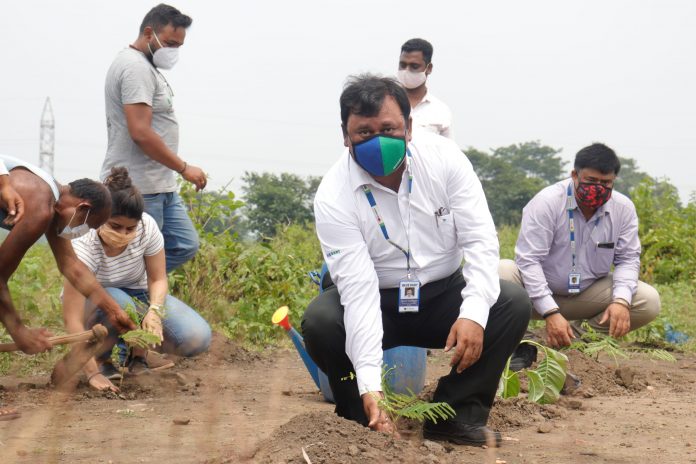Bhubaneswar : Blue Dart has planted 1,03,170 trees in the Dalma Wildlife Sanctuary along with its tree plantation partner, GrowTrees.com. Blue Dart is driving this Green Campaign which will improve elephant habitats considerably and offset over 20,00,000 kgs of carbon per year on maturity. The initiative is a part of the organization’s Sustainability Roadmap that acts as a detailed guide in aiding the organization’s goals to give back to the communities and the environment it operates in. The roadmap details three crucial elements – clean operations for climate protection (Environment), being a great company to work for all (Social) as well as being a highly trusted company (Governance).
The trees planted include local tree species such as Tendu, Jackfruit, Bamboo, Mango, Shisham, Jamun, Karanj, and Guava.
The Dalma Wildlife Sanctuary, located in East Singhbhum, proves to be a haven that boosts one of the largest elephant populations in the country. With an undulating terrain that includes high hillocks, plateaus, deep valleys and open fields between hillocks, this sanctuary is known to be a paradise for elephants and provides a diverse habitat for flora and fauna. Situated in the catchment area of the river Subarnarekha, the sanctuary stretches over an area of 195 sq. km providing ample space for the elephants to peacefully coexist without any interference from human settlers.
An environment and animal enthusiast himself, Ketan Kulkarni, CMO & Head – Business Development, Blue Dart, says, “Blue Dart has always been an organization that takes every necessary step in ‘Connecting People, Improving Lives’. World Elephant Day brings into focus the African & Asian Elephants who we need to protect from poaching, habitat loss and human-elephant conflict. Keeping this in mind, we wanted to ensure that our tree plantations can contribute towards securing a future for this wondrous species by reducing human-elephant conflict, keeping elephants from entering and feeding on cropland, and approaching residential areas around forests in search of food.”
-Odisha Age



















